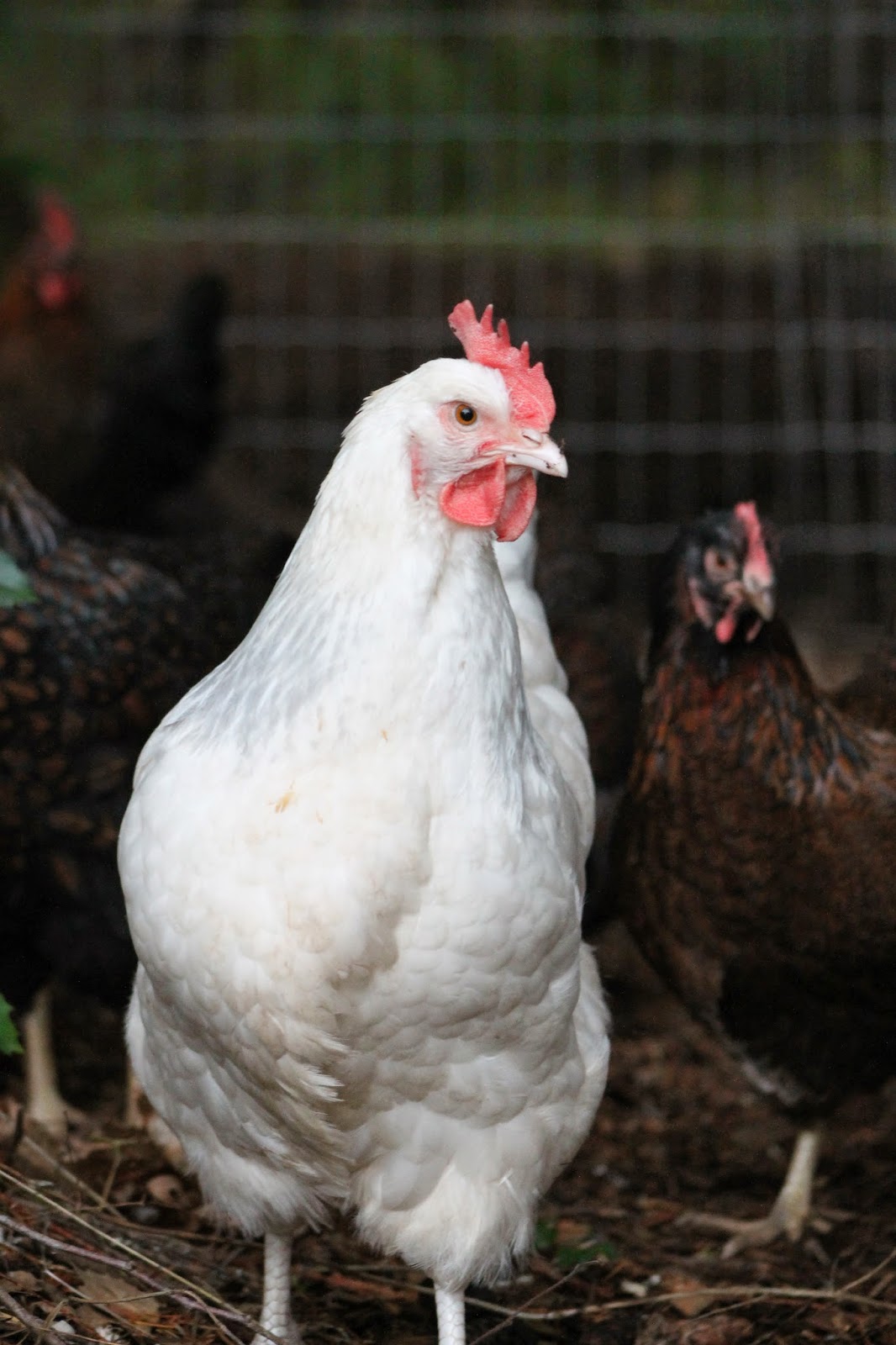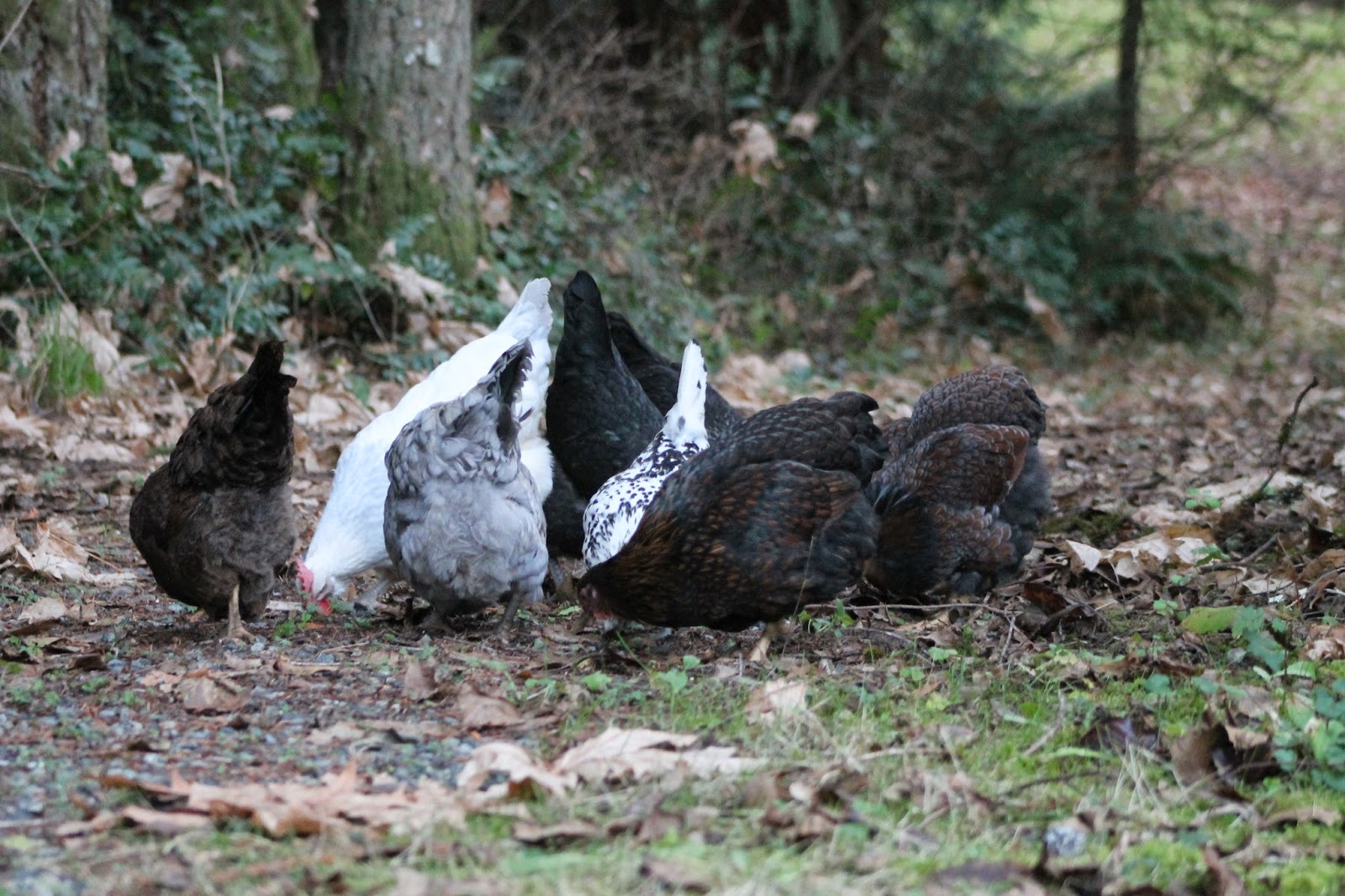Happy Friday friends! If you are thinking you might like to add chickens to your life then today's guest post is for you. Amanda of Briarwood Poultry (a woman very passionate about her birds) is sharing her insights and knowledge to help get you started.
Here is what she has to say:
So, you think you might like to keep chickens? Whether you have a house in town and plan on keeping 4 hens in a small coop in the back yard, or you have a hundred pristine acres and a huge barn and intend on getting a small flock of birds, you definitely want to make sure you are ready to discover your next super addicting hobby! This article will help guide you to set up a coop that is suitable for housing chickens that are juvenile or adult in age, and ready to start laying fresh, delicious eggs.
Chicken keeping is a relatively simple way to take a first step into producing your own food in the form of eggs. Home grown eggs are extremely tasty, healthy, and you can choose what you wish to feed the hens that lay your eggs whether that be GMO free, organic, naturally sourced feed. You can also ensure you are giving them a stimulating and enriched environment, something that is not generally an option for commercial laying hens. You will also probably find that chickens are like chocolates (presuming you like chocolate, that is) and it will be hard to stop at just having a couple. Once you discover the many different types and varieties, different feather colours, shapes, sizes and personalities, you will be hooked! And we haven’t even started to talk eggs yet! There is a large variety when it comes to eggs, too, there are different sizes and ranging in colour from the commonly known white and brown, to a rich chocolate brown, blue, green and even olive in shade!
So, if you are looking for girls ready to lay, avoid cockerels and roosters, and try to find a few hens to begin with. There are many different types of chickens available, so make sure you research something that will suit your needs. If you want friendly and inquisitive brown egg layers, try sussex or orpingtons, or maybe even Euskal Oiloa if you are after something with a little flair. If you want independent ladies and aren’t too concerned about having traditionally coloured eggs, marans, leghorns, spitzhauben and ameraucana’s will lay beautiful eggs and aren’t as ‘in your face friendly’ as the previously mentioned. Or, if you just can’t seem to find any heritage breed chickens, why not try some commercial brown layers, also commonly known as ISA Brown laying hens. They are brown birds that lay brown eggs, relatively friendly, and lay very well for their first year but often peter out after that. Or, if you just can’t choose one breed, try a couple of different breeds that appeal to you, like we have in our laying flock for eating eggs! Just make sure you have enough room in your coop, maybe start with 1 of each breed of 3-4 different breeds, if you can chose just a couple to try!
A variety of heritage breeds is what makes up our laying flock for eating eggs at Briarwood Poultry
Ameraucana, blue egg layers with fantastic beards!
Wyandottes, very friendly and equally beautiful!
One of the more rare breeds, Chocolate Cuckoo Bantam Orpington
You can try perusing your local classified ads, find out when there’s a local poultry swap, attend a show, or try contacting breeders to see if they have any hens available. Speaking from personal experience as heritage poultry breeders it’s not too often that we have hens available as we generally only keep back birds that are high quality for breeding and the lesser quality birds supply us with eating eggs. But, it can’t hurt to ask. Once you have set up or found a venue to purchase birds, it’s time to do a meet and greet.
When you go to pick them up, make sure you bring a sturdy and secure box with some form of bedding in it such as shavings. When you meet the birds have a look at them. Do they appear healthy and well kept, feathers shiny and not too ruffled? Sometimes they can be missing feathers on their backs if they have lived with roosters, this is ok, just look and see that they don’t have any wounds. Are their combs and wattles nice and bright red? Eyes clear? Not sneezing or coughing? Also look at the legs to make sure the skin is smooth and not rough or lifted looking. You don’t want to bring home a sick chicken on your first try! If all appears well, go ahead and load them into your box. You can expect to pay anywhere from $15-$30 for young hens that are laying eggs. Commercial breeds such as the ISA brown hens are generally around $15, and on the higher end of the spectrum would be more specialized birds such as the marans that lay dark chocolate eggs, or ameraucana that lay sky blue eggs. The more rare birds, or recently imported from other countries can sell for higher, but to start, pick something more easily accessible!
Once you get your chickens home, make sure to leave them locked in the coop overnight (give them a small dish of water until morning). The next morning, let them outside into their safe run and watch them stretch their legs and flap their wings! They may need to be guided back to the coop at dusk for the next several evenings, but they will figure out how to go to bed on their own once dark comes. It may take a few weeks for chickens that were already laying to begin laying again in their new home with you, so be patient. You can also win over their trust and encourage them to be friends with you by feeding treats such as hen scratch, fresh berries and veggies (except onions, potatoes, and anything in the night shade family), they also love bread crusts and cooked pasta, just remember – everything in moderation! Enjoy your new chickens and I hope you found this to be helpful!
Thank you so much Amanda!
I have a small flock of laying hens from Amanda and I love them (Cora my Coronation Sussex is the first photo in this blog post).
Dottie my Apenzeller Spitzhauben:
Marion my Black Copper Marans:
My girls in a group searching for bugs and other good things to eat:
Briarwood Poultry does ship both eggs and chicks Canada wide. Be sure to like them on Facebook to keep up to date on all their latest happenings and breeds available. And if you haven't already, be sure to like The Pulse too.
Have a great weekend!






























































